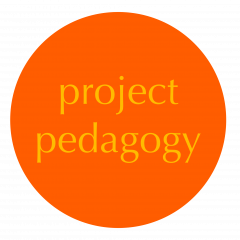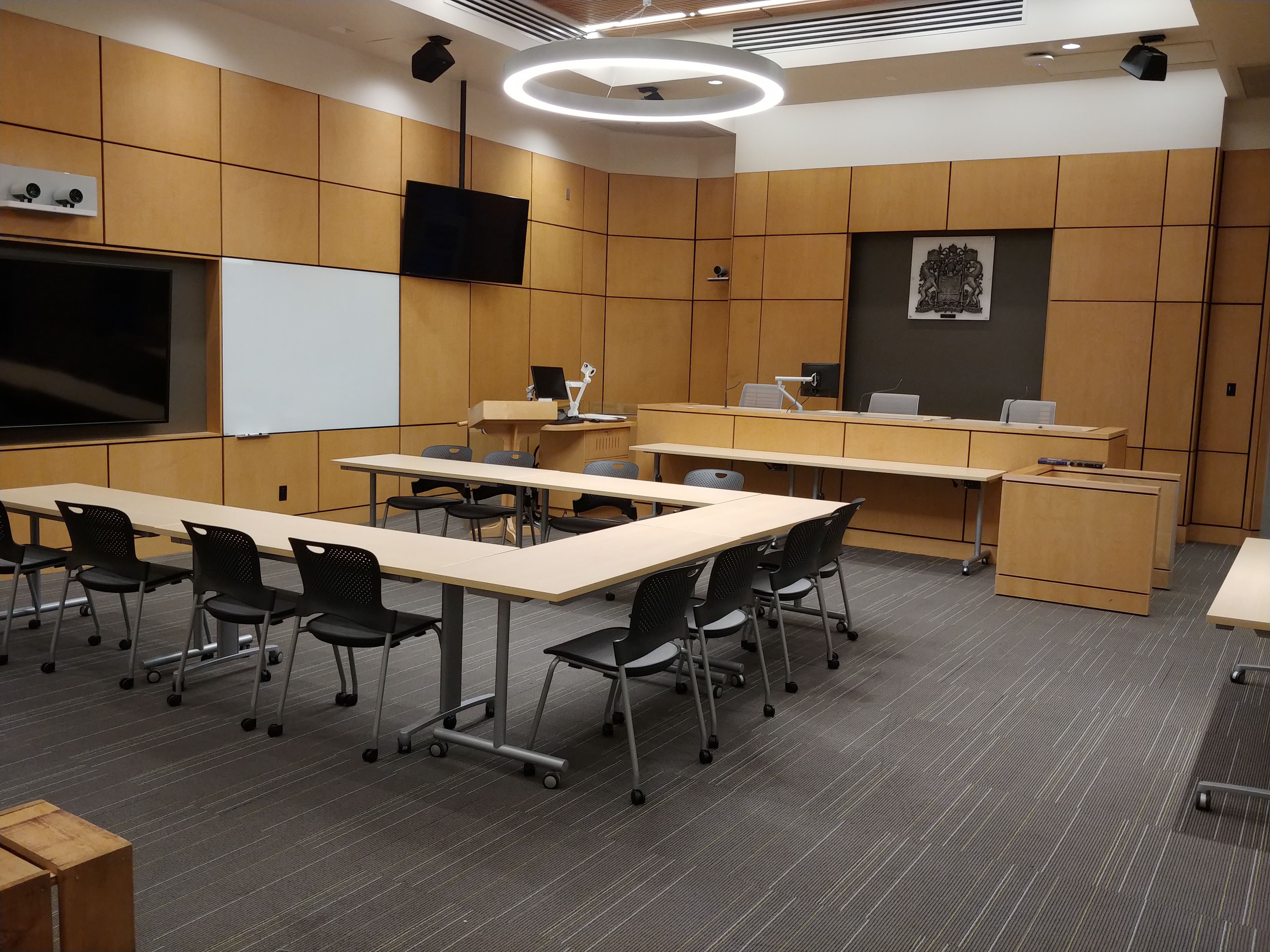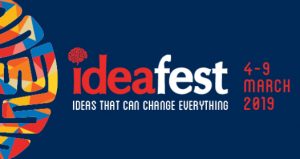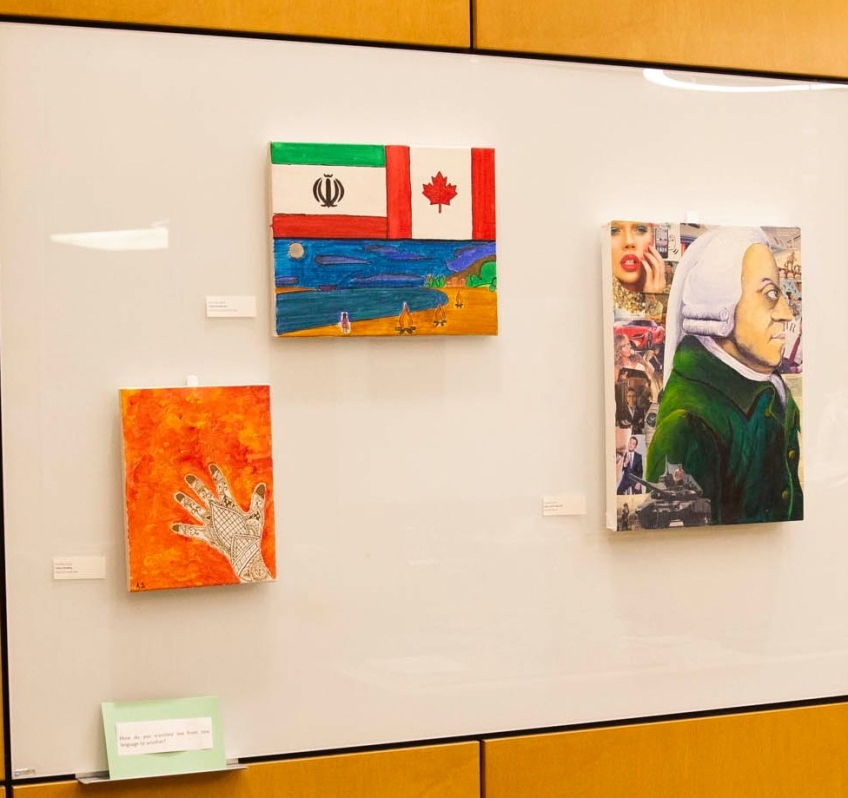I was asked by Patricia Cochran, Director of Legal Process, to write a short memo about the use of “Icebreakers” in Law 106, our orientation course that is required for all 1L students at UVicLaw. I am including the memo below in the spirit of sharing. It is not “project pedagogy” in the sense envisioned by the creators of this site; that is, it is not really about using projects to evaluate law. But, it is asking us to think creatively and with intention about the choices we make in the law school classroom. And, it is offering up some imaginings of why that might take on a different kind of importance at this moment, as students come back to school virtually, and in a pandemic.
As with all dimensions of project pedagogy, this memo is offered as a piece in a broader conversation about the choices we make when teaching law, including things that work as well as things that don’t work, and importantly, what we learn in both situations. Hopefully, this will lead to more sharing about “icebreakers” and other ways that we connect our students to each other, to us and importantly to their learning.
Special thanks to friends who responded through #LawTwitter with examples of things they have tried in their classrooms. The thread is included below.
Gillian Calder
August 2020
***
What are Icebreakers?
The first days are the hardest days…
– The Grateful Dead
Icebreakers are “short activities, often at the beginning of courses, tutorials, and meetings, that provide an opportunity for students to engage with the instructors, TAs and one another.”[1] There are various forms of icebreakers ranging from a simple question to a detailed exercise with objectives and outcomes. In online settings, the use of icebreakers increases in importance as it is a means to promote “social presence”[2] with the goal of connectedness between the students and the professor, the students and each other, and the students and the materials.
It will not be surprising to anyone that students who feel more connected to their learning, will tend to do better.[3] In an online context “increased personal interaction within the framework of the course, either with the instructor or with student peers, positively affects student learning.”[4] The quality of those interactions, however, and the connection to the course, leads to better outcomes. Where things have shifted for us is that a course that is designed with building community as one of its core objectives is now being offered virtually. Finding ways to enhance a positive experience for our students through exercises, like icebreakers, will pave the way for engagement on more challenging forms of pedagogy, and foster trust in the choices being made by the instructors and others in the room.
What we do in Legal Process this year will by necessity be different.[5] How we set the tone. How we are welcoming. How we address their differences, in social and geographical location. And how we address the trauma that they, we and the planet are living with and through. Icebreakers are thus an important way to do some of the very important connecting work, with attention to equity, diversity and inclusion, and if we do them well, with care and humour. Small ways to ready them for the hard questions Legal Process poses, and the different kind of work they will walk into when the course concludes.
Senthorun Raj writes, “If law seeks to engage with human experiences of inequality and abandonment, then law students need to be able to “hear” stories in a way that does not presume that the ideal (legal) listener to such stories is emotionally indifferent nor does it presume law is a rational frame in which these stories can be told.”[6] Part of the work in Legal Process is meeting them where they are at; laying the groundwork for the challenging, emotional, and intellectually rigorous work that lies ahead.
This memo offers some suggestions for how using small exercises, like icebreakers, is an accessible way to do that.
Icebreakers in Legal Education
The literature on icebreakers point to the many benefits of short, carefully designed activities as part of synchronous learning in an online course. The benefits include: as a means to reduce anxiety; fostering interaction between educators and learners, and between learners and each other; laying the groundwork for the importance of experiential learning as integral to their law degrees; bringing care into the equation; and starting to build relationships.[7] Or simply, it can help them to feel that even though they are not here, they are not alone.[8] It is clear that a well-designed and executed icebreaker can set the tone, early on, that instructors are interested in their students and in the classroom as an engaged place of learning, even and especially in a virtual world. However, the literature on icebreakers in legal education also raises the question of whether these exercises are too elementary or trivial for use in a professional program.
The answer to that question “is it juvenile or helpful?” depends, of course, on the type of exercise chosen, and its execution. The literature also points, however, to less patience from students on “get-to-know-you” type exercises in their required courses, and more interest in icebreakers that are tied to the learning at hand.[9]
In Legal Process, where one of the most important goals of the course is creation of community, but where we will not be in the same room this year, icebreakers take on a different kind of importance. Our time in small groups is less than in previous years, which will make some of us anxious to get to the “substantive” learning. It will be important, nonetheless, to include a few icebreakers in the course to ensure that we are not skipping over the important work of them getting to know us, us getting to know them, and the connection that can grow as a result both within our small groups, but also to the material.
What Icebreakers are Best?
The literature on icebreakers is mixed, lots of examples of different kinds of small exercises to meet the different goals of a law school class (and indeed of all sorts of places of learning). For example, in a blog post, Lynn Su and Anne Goldstein, professors in the first year legal skills programming at New York Law School, have designed a set of exercises that employ interviewing and presentation skills; and advocate for their use as a way to start the process of developing their skills in a legal research and writing context.[10] These include icebreakers like interviewing a partner and introducing them to the group, or dividing into law firms, and describing their firm strengths to each other. As well they have other exercises that require a bit more set up like interviewing a hypothetical client; or dramatizing a case; and exercises tied to other learning objectives such as mindfulness. Thinking carefully about the icebreakers we choose and the goals of Legal Process, specifically, will be important.
- Posing a question
The most common form of icebreaker in legal education is posing a question to the students (and instructors should always answer as well); a way of enabling the diversity of the students’ interests and backgrounds to emerge without creating the stress of more formal means of introduction.
Some questions that have worked in Legal Process in the past include:[11]
Tell a story about a place that is really important to you.
Tell a story about your name.
Tell a story about a favourite popular culture moment (favourite book, movie, tv show, etc.)
What is the best thing/exercise you have ever done in a classroom as a teacher or as a learner?
These have been effective over the years because they are wide open enough to enable students to only reveal what they comfortable revealing, given the various levels of comfort that students will have with these forms of exercises, but at the same time they can offer ways that students begin to connect with each other, and ways for instructors to begin to connect as well. As trust builds throughout Legal Process and we model that these exercises are not just “fluff” but integral to the course, they become even more effective.
UVic Law graduate students Dr. Qian Liu and Caroline Grady shared that they found these to be very effective in the introduction to law course that they facilitated with Professor John Borrows at UVic Law in the summer of 2020. They added:
What is your dream vacation?
There are lots of examples online,[12] things to think about before posing a question as an icebreaker are: will it put students on the spot? Will it be too revelatory, or create the kind of environment that will have the students competing with each other? Does it risk evoking a memory of trauma or of loss?
These can work “popcorn style”, going around in a circle or some other linear way, or by sending participants into break out rooms to do in smaller groups.
- Crowd Sourced
I asked a question on Twitter (August 22, 2020) to see what folks would say was the best “icebreaker” they have tried in a law school classroom. With thanks to everyone that responded — the (delightful) thread is here: https://twitter.com/gilliancalder/status/1297182089796882432?s=20
Examples:
Share a boring fact about yourself.
What’s the best piece of advice you’ve ever received?
What’s your karaoke song?
What is your favourite word (any language, any reason)?
What rock star would you choose to be reincarnated as? (All sorts of variations on this one)
With a partner (or small group) find something that they have in common that has nothing to do with school. And then have them introduce each other to the room.
Share a little known fact about yourself.
What do you love?
Pair/share and introduction as an exercise in careful thinking and respect
Have instructors tell their stories
This small thread also highlights the risks in icebreakers, and the context of the law school classroom. Thanks #LawTwitter.
- Table topics[13]
Similar to posing a question, this is a question that is designed to start a conversation; and can be used less as a go around the circle to learn about each other, and more of a way to get students talking or taking up a particular issue (pair/share, breakout room). This could be a standalone question like:
What has surprised you most about this course so far?
Which of the authors that you read for today would you most want to invite to a dinner party?
Is there such a thing as perfect?
It could also be an exercise like the one described in the Instructor’s Manual that used to be used to introduce “Social Ordering” and that is designed to be facilitated by the instructors:
Consider this fact scenario. You are the principal in a small engineering firm. You have a partner and have been working for 12 years together. You finally have the resources and the energy to hire a new associate. You advertise and end up with two equally qualified, young candidates. One is female-identified and one is male-identified. You suspect that the female candidate, who has shared that she recently married, may be pregnant.
What factors do you consider when making your decision about who to hire?
As the students start to offer some thoughts work with their suggestions. Which ones are legal? What legal regimes do we have to understand to answer that question? Human rights law? Anti-discrimination law? Maternity and parental leave regimes under EI law? What other factors are relevant and why? What kinds of assumptions are at play? About gender? About parenting? How are economic factors relevant? What about the context – an engineering firm – are employers under obligations given the history of engineering in Canada to hire more women? Again, the focus here is not to come to an “answer” but to show how in any given context there are various legal, quasi-legal, and non-legal forces at play.
Sending students into breakout rooms so they can use the whiteboards there for these kinds of table topics might be another short way to get the creative juices going and to foster their connections to each other.
-
- Interviews and Introductions
A very common icebreaker is to break students into groups of 2 or 3, to have them interview each other and then introduce their partner to the group. This can be lovely, it can also be disastrous, as the questions tend to focus on things tied to formal notions of success.
Another version is to have students write a “tweet” introducing themselves (140 characters or less). They will then have time to see all the tweets of their classmates.[14]
- Games
One of our most successful “Icebreakers” has been Barnga – or “The Card Game” which has been used to introduce the idea of law and its sources, through a game involving a deck of cards, a set of rules, a “twist” that eliminates the students’ ability to communicate with each other through oral or written language, and a mandate to “get to table 5.” Games are very hard to do without everyone being in the room, but can be very effective ways for students to engage in an accessible way with concepts of their learning that are otherwise hard to get at except through reading.
The authors of “The Card Game” are looking to see whether they can design an online version. In the meantime I found a couple of articles about using games in the law school classroom, perhaps for future use: “We’ve Got Game” and Open Law Lab (can’t vouch for either of these).
Another “game” is “Two Truths and a Lie” which was also a suggestion made in respose to the #LawTwitter question posed above. In this game, each person produces three statements about themselves, two truthful and one that is not. The group votes (polling on Zoom could be used for the voting) on which they think is true and which is not. Risky, yes. Fun, no doubt. Lots of learning between students.
- Learning Styles
Another idea is to have students take a learning style questionnaire and then to take up the outcomes in a discussion with attention to resources. VARK has been a reliable questionnaire for legal learning in the past.
- Homework/Geography
An effective icebreaker can be one that is set up the day before. It eliminates the “on the spot” anxiety of some of these exercises and can also facilitate more engaged or careful answers by the students. One example is the “Pulling the Weeds” exercise, described by Suzanne Lenon, Kara Granzow and Emily Kirbyson on the #ReconciliationSyllabus website.
I have used a west coast version of this exercise at the outset of my Sex-O seminar; by giving the students pages from Nancy Turner’s book, Saanich Ethnobotany https://shop.royalbcmuseum.bc.ca/product/saanich-ethnobotany/ and then asking them, as Lenon et al, do, to go out into their neighbourhoods to see if they can find their assigned plant. This could be adapted to bring to the fore that students are throughout the country (and some outside the country) in doing this exercise. They then have to answer a set of questions which we take up at the outset of class:
“Pulling the Weeds” Assignment[15]
This assignment begins our course by asking us to think about the relationship between law, land, location and identity.
You have each chosen one photocopied page from Nancy J. Turner and Richard J. Hebda, Saanich Ethnobotany (Victoria: Royal BC Museum, 2012).
Before next class, please see if you can locate your chosen plant in the locations that you live, work, study, learn. Please do the following four things:
- Mark up your handout with what you have done to find your plant, or any other reflections that you have in response to the text;
- Document your interaction with your plant (what did you do when you found it; or if you didn’t find it, what you found instead);
- Answer the reflective questions below (drawn from Lenon, Granzow, Kirbyson) or adapt.
- Bring something to class (specify date) to share from your experience.
Reflective Questions
- Describe the experiences of seeking out the plant that you chose;
- Describe the sensory elements of engaging with your plant (how did the soil smell, what was the texture of the plant, were there birds chatting nearby, etc.);
- Where did you find your plant? Whose land were you on?
- What is your relationship to the place where you found your plant?
- What discomfort did you experience in engaging with your plant or this exercise?
- What is the relationship between your plant, the land where you found it and this course? Why did I ask you to do this?
- What connections do you draw between this exercise and the readings you have done for today’s class (or readings from last week)?
I anticipate that this could be a very good Icebreaker for situating everyone in the class geographically.
Some concluding thoughts
The mechanics of icebreakers will depend on time. If you do pose a question and give space for each person in the room to answer you must be willing to let that take the time that it does, which is never time wasted, but can take a while. Alternatively, using Zoom to send students into break out rooms can decrease anxiety and save time, but as instructors we will miss out on access to some of what happens in those spaces.
Remember that polling is also a feature of Zoom that is available to us and can be an effective, confidential, and quick way to get some answers on questions.
Keeping things simple and light-hearted will help to address the anxiety that many students will have both about these kinds of exercises, but about being in law school and about being in law school in a pandemic. But doing an icebreaker that you can return to at another moment, will enable the students to get an even stronger sense of the integrity of this course.
Be creative. Our students have all spent many years in formal education and already many years at University. They have run companies, organized summer camps, been in therapy, parent and been parented. They will have done icebreakers before and most will not like them. Up to us to use them creatively, innovatively, but most importantly, to advance the goals of the course and enhance their learning.
Finally, part of what makes an icebreaker work is that it connects the students to us and to each other in ways that we would not ordinarily get access to. They are diverse, and not just in terms of race, class, gender and sexual identity. They will have experienced the pandemic very differently. The come to law school from many different routes. Legal Process is, in some ways, just one big icebreaker for law school.
In this sense, it is also important for us to think about ways to address the emotion that they will carry with them into our small group sessions. In a recent article on law and emotion, Senthorun Raj wrote, “Foregrouding emotion in the legal classroom generates vulernability and this carries certain opportunities and risks.”[16] I have also written on the role of emotion on teaching and learning law. In my view, “a different kind of pedagogy is necessary in order to get students to see the connections between what they are learning, to recognize the interconnections to other areas of law, to see a problem for its messiness, to enable them to see that both emotion and cognition significantly impact human decision-making, especially decisions where social and moral questions abide.”[17] Legal Process does this – for law school, and icebreakers can do a small piece of this for Legal Process.
Share what is working. We are all in this together.
[1] Icebreakers for Online Classes, Centre for Teaching Excellence, University of Waterloo, https://uwaterloo.ca/centre-for-teaching-excellence/teaching-resources/teaching-tips/teaching-tips-creating-positive-learning-environment/icebreakers-online-classes
[2] Communicating with Students, Centre for Teaching Excellence, University of Waterloo, https://uwaterloo.ca/centre-for-teaching-excellence/teaching-resources/teaching-tips/teaching-tips-creating-positive-learning-environment/communicating-students#social-presence
[3] See discussion in Shanna Smith Jaggars and Di Xu, “How do online course design features influence student performance?” (2016) 95 Computer and Education, pp. 270-284 at 273, https://www.sciencedirect.com/science/article/pii/S0360131516300203
[4] Jaggars and Xu, supra at 273, citing R.M. Bernard, et al., A Meta-Analysis of Three Types of Interaction Treatments in Distance Education, https://journals.sagepub.com/doi/10.3102/0034654309333844.
[5] Legal Process (Law 106) is a mandatory, two week, intensive course taken by all 1L students at UVicLaw since the founding of the law school. Its objective include building community, explore the idea that people are agents with respect to law, introducing a variety of legal skills, and developing the capacity of students to ask a broader range of questions about law. It also takes students out of the classroom and into other spaces (including up a mountain and onto the streets of downtown Victoria) where law lives as part of how we introduce and decentre law’s significance.
[6] Senthorun Raj, (2020) “Teaching feeling; bringing emotion into the law school” https://www.tandfonline.com/doi/full/10.1080/03069400.2020.1781456 at 3 citing Jill Stauffer.
[7] Sandra Simpson, Gonzaga University, School of Law, Icebreakers in Law School: Juvenile or Helpful? Institute for Law Teaching and Learning http://lawteaching.org/2016/08/31/icebreakers-in-law-school-juvenile-or-helpful/
[8] Elizabeth Stuttard, Building Online Community, http://www.bellaonline.com/articles/art52363.asp.
[9] Simpson, supra.
[10] Lynn Su and Anne Goldstein, Getting them at Hello: Creative Teaching Techniques and Exercises to Engage New Law Students, Teach Law Better, https://teachlawbetter.com/2018/06/11/getting-them-at-hello-creative-teaching-techniques-and-exercises-to-engage-new-law-students/
[11] For a discussion of icebreakers used in Legal Process – see the Legal Process Instructors Manual. Archived to the Law 106 BrightSpace, and available upon request.
[12] Gilly Salmon, E-tivities: The Key to Online Learning (Routledge Falmer, 2002) https://laulima.hawaii.edu/access/content/group/fb8c10fd-5445-420b-0034-bad118df6196/TeachingResources/InnovativeGettingToKnowYouActivities.pdf; https://www.gillysalmon.com/e-tivities.html; https://www.canr.msu.edu/news/65-icebreaker-questions-for-online-meetings
[13] Valeria Symonds, 21 Free Fun IceBreakers for Online Teaching, Students & Virtual and Remote Teams, https://symondsresearch.com/icebreakers-for-online-teaching/
[14] Let’s Twitter! https://sites.google.com/site/adultonlineteachingstrategies/virtualicebreakers/let-s-twitter—not-done
[15] Assignment inspired, with thanks, by the work of Suzanne Lenon, Kara Granzow and Emily Kirbyson: https://reconciliationsyllabus.wordpress.com/2017/08/23/pulling-the-weeds-by-suzanne-lenon-kara-granzow-emily-kirbyson/
[16] Senthorun Raj, (2020) “Teaching feeling; bringing emotion into the law school” https://www.tandfonline.com/doi/full/10.1080/03069400.2020.1781456 at 10.
[17] Gillian Calder, “‘Whose Body is this?’ On the role of emotion in teaching and learning law” in Susan Bandes, Jody Madeira, Kathryn Temple, and Emily Kidd White, eds., The Edward Elgar Research Handbook on Law and Emotions (forthcoming 2021), https://papers.ssrn.com/sol3/papers.cfm?abstract_id=3673491 at 12.





 On the final day of the event, we held a “Gallery Walk” where three of the professors who had been involved (Professors Gillian Calder, Rebecca Johnson and Sara Ramshaw) spoke in more detail about the specific projects that were in the room, to open space for conversations about things that might be learned through producing, evaluating, and interacting with arts-based methods in the context of a law school. What follows below is a transcript of that gallery walk, along with some images to capture the sense of the exhibition.
On the final day of the event, we held a “Gallery Walk” where three of the professors who had been involved (Professors Gillian Calder, Rebecca Johnson and Sara Ramshaw) spoke in more detail about the specific projects that were in the room, to open space for conversations about things that might be learned through producing, evaluating, and interacting with arts-based methods in the context of a law school. What follows below is a transcript of that gallery walk, along with some images to capture the sense of the exhibition.





























 At one corner we have placed 4 different book projects. One is a brightly coloured paper bag book: the student stapled together paper bags and then produced a book engaging with the economy. Each of the paper bags has in it a pull-out, handout, and each of these responds to the questions that were raised in the assigned book for the course. Each page provides another way to tell the story of the economy and how it might look different. There is yet another book at the front you may wish to explore: a small coil bound book of poetry. It contains preambular and definitions sections, as well as poems for different forms of business. As you might imagine, the poems for partnership come out in the form of couplets. And the poem for the sole proprietor folds out to extend beyond the range of the pages, marking how that form is unbounded by any formal choices. They can go on as long as they want. There are poems for Corporations, and for Cooperatives, along with poetic discussion of such things as font choices.
At one corner we have placed 4 different book projects. One is a brightly coloured paper bag book: the student stapled together paper bags and then produced a book engaging with the economy. Each of the paper bags has in it a pull-out, handout, and each of these responds to the questions that were raised in the assigned book for the course. Each page provides another way to tell the story of the economy and how it might look different. There is yet another book at the front you may wish to explore: a small coil bound book of poetry. It contains preambular and definitions sections, as well as poems for different forms of business. As you might imagine, the poems for partnership come out in the form of couplets. And the poem for the sole proprietor folds out to extend beyond the range of the pages, marking how that form is unbounded by any formal choices. They can go on as long as they want. There are poems for Corporations, and for Cooperatives, along with poetic discussion of such things as font choices.




